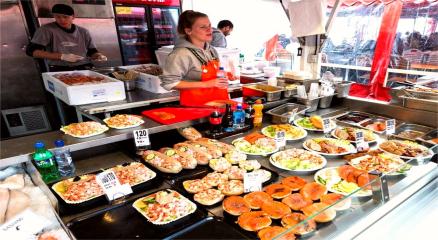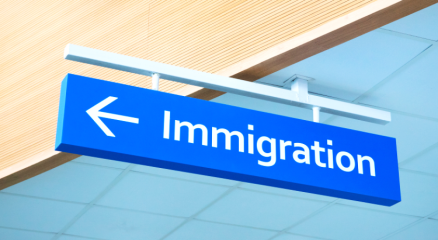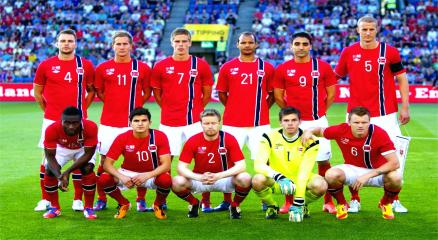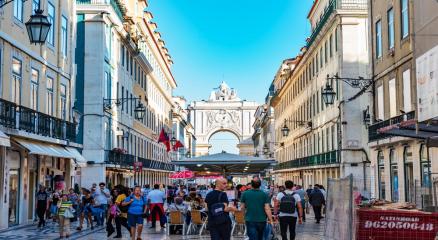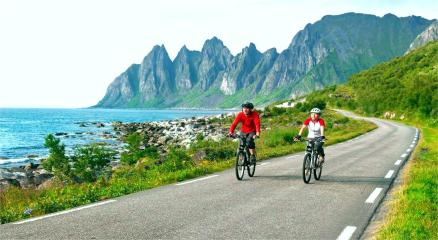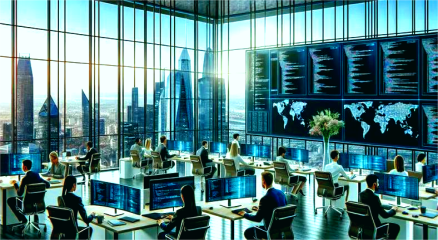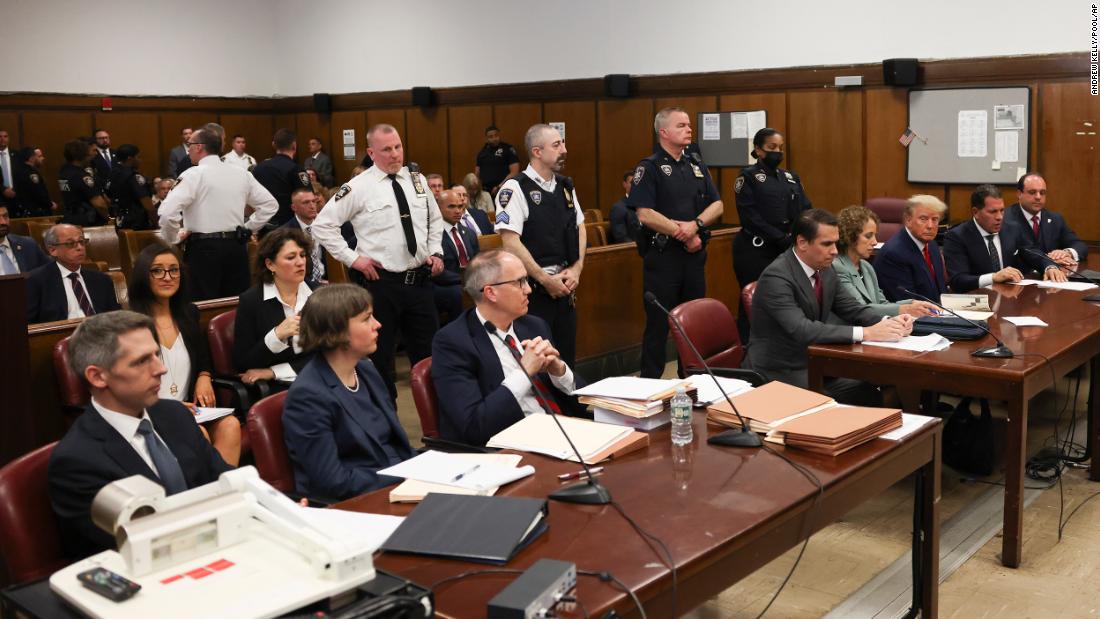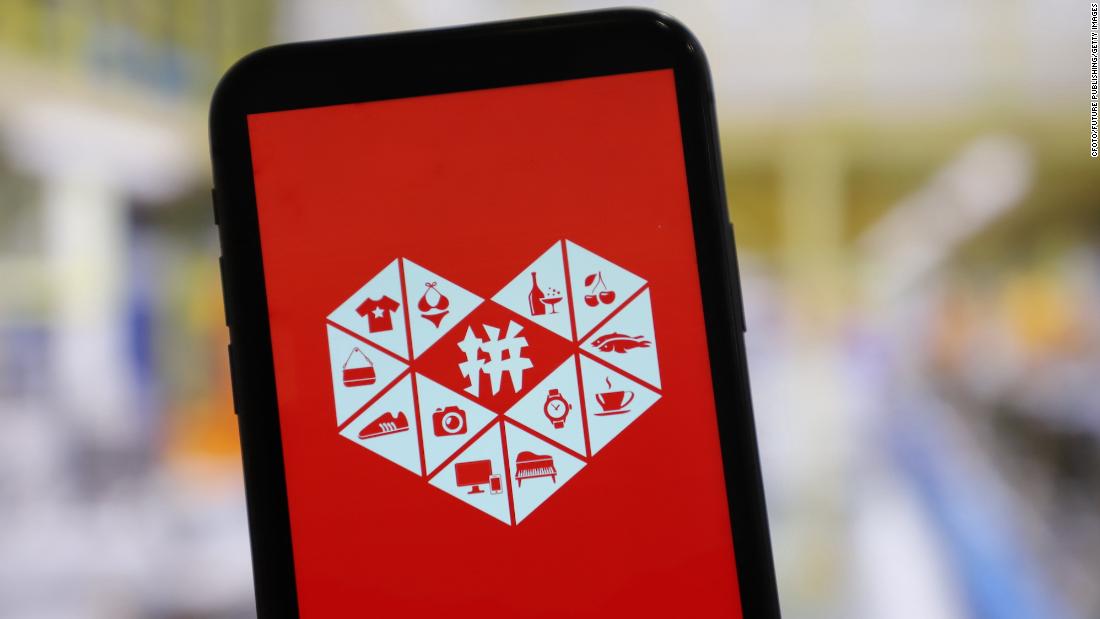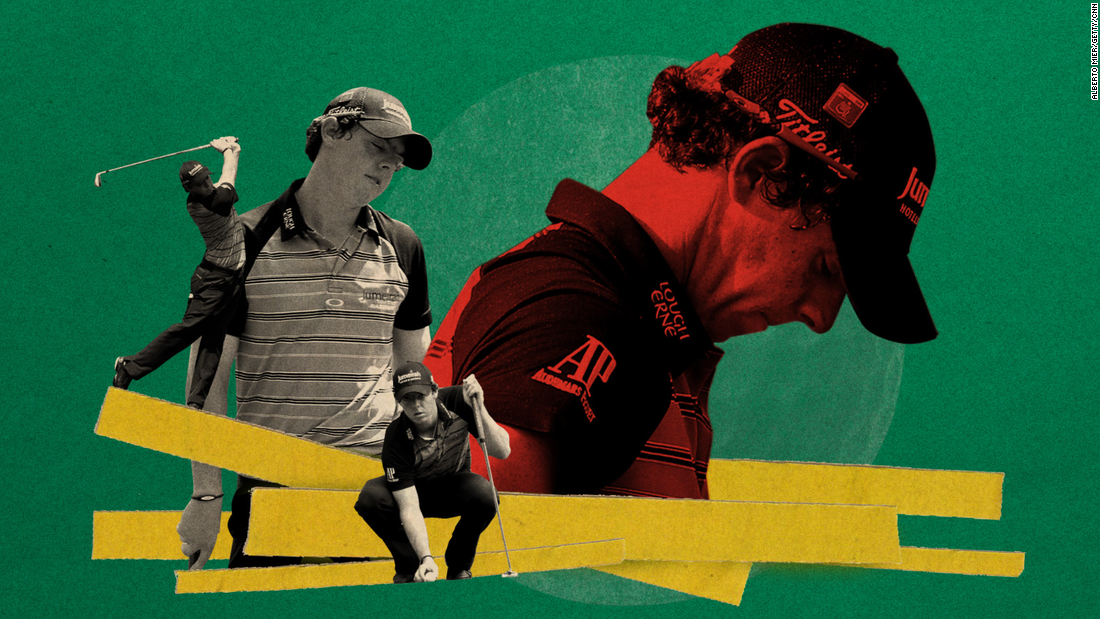Global Politics Update: Power Shifts, Conflicts & Democracy Under
Political landscapes around the world are in flux. New conflicts are emerging, democratic institutions are being tested, and global power dynamics are shifting rapidly. Here are some of the most significant political developments:
1.Gaza Conflict Escalation — Israel has launched a ground offensive in Gaza City, urging residents to evacuate amid intense hostilities. The humanitarian situation is worsening, with thousands displaced
2.Global Decline in Press Freedom — A report by the International IDEA finds that press freedom has seen a sharper fall in recent years than at any point in the last 50 years. Countries including Afghanistan, Myanmar and South Korea are among those with severe declines.
3.EU Sanctions & Regional Tensions — European leaders are calling for sanctions against Israel following airstrikes across the region, including Yemen. These acts have stirred diplomatic controversies and raised questions about regional stability
4.U.S. Domestic Politics & Polarization — In the U.S., political divisions remain deep. Controversies over civil rights, immigration, and institutional trust continue to fuel heated public debates. Observers worry this polarizing atmosphere may undermine democratic norms and governance effectiveness.
These events underscore a common theme: in many parts of the world, democracy, human rights, and freedom of expression are under pressure. Power is shifting — sometimes abruptly — and the world is watching closely to see how governments, international bodies, and citizens will respond.
Unlocking Opportunities: A Comprehensive Guide to Studying in Hungary – Tuition Fees & Facilities for International Students
Study in Hungary: Details on Tuition, Facilities & Student Life (2025)
Hungary has become a popular destination for international students seeking quality higher education at relatively affordable costs. With reputable universities, many English-taught programs, extensive facilities, and a central European location, it presents strong value. In this article, we explore what you need to know about tuition fees, student facilities, and living costs when studying in Hungary in 2025.
1. Tuition Fees: What You Should Expect
Tuition fees in Hungary vary widely depending on several factors:
Program type (Bachelor’s, Master’s, PhD)
University (public vs. private)
Subject area (medicine, engineering, arts etc.)
Whether you are an EU vs non‑EU student
Here are some sample ranges:
Level / Field
Public Universities
Private / Specialized Institutions / Medicine & Dentistry
Bachelor’s (most programs)
≈ €1,500 – €6,000/year Study.eu+3Qogent Global+3Aspiredia+3
up to €8,000/year or more in private universities or competitive programs Study.eu+2Qogent Global+2
Master’s
≈ €2,000 – €8,000/year in public or mid‑range universities Aspiredia+2Qogent Global+2
higher for specialized, private or medical/dental fields, sometimes going over €12,000–€16,000/year a2z Edu Care+2Study.eu+2
Medicine / Dentistry / Veterinary
Typically among the highest; €8,000 – €20,000+/year depending on the institution and language of instruction Qogent Global+2Media Top Study World+2
Some examples of specific universities:
University of Pécs: Bachelor’s tuition around €5,500‑7,000, master’s around €6,000‑8,000. Career O'clock
University of Debrecen: Comparable ranges depending on subject. Career O'clock
Eötvös Loránd University (ELTE): More moderate fees in many programs, especially non‑medical. HunEducation+2Study.eu+2
Also keep in mind administrative fees: application fees (sometimes €150‑200), registration fees, occasionally deposits for housing etc. apply.budapestcollege.hu+1
2. Living Costs & Accommodation
Tuition is only part of the picture. Your total cost will include accommodation, food, transport, health insurance, books, and other living expenses. These differ significantly between cities (Budapest tends to be most expensive) and depending on your lifestyle.
Here’s a breakdown:
Accommodation:
University‑dormitories often cost €150‑€300/month, sometimes more depending on amenities. Scholars Avenue+2HunEducation+2
Shared apartments or rooms in furnished flats: €200‑€500/month depending on city and location. rpeducation.net+2Scholars Avenue+2
Private studio or one‑bedroom flats: can go higher in cost, especially in Budapest. HunEducation+2Aspiredia+2
Food, Transport, Miscellaneous:
Groceries: €100‑€250/month depending on how often you cook vs eat out. rpeducation.net+1
Public transport: €10‑€30/month for student passes in many cities. Scholars Avenue+1
Utilities & Internet: €50‑€120/month depending on housing type and location. Scholars Avenue
Health insurance: mandatory for non‑EU students; cost varies but can be €50‑€100/year or per month depending on coverage. rpeducation.net+1
Total Living Costs per Year:
In smaller university cities (e.g. Debrecen, Szeged, Pécs): €5,000‑€9,000/year including accommodation, food, transport etc. HunEducation+1
In Budapest: higher; could be €8,000‑€12,000/year depending on lifestyle. Qogent Global+1
3. Facilities & Academic Environment
One reason Hungary is attractive is the quality of facilities and student‐friendly infrastructure. Here are some of amenities and support systems you can expect:
Modern Campuses: Many universities have up‑to‑date lecture halls, labs, libraries, research centres, especially in disciplines like engineering, science, medicine.
Dormitories & Student Housing: On‑campus dormitories are common; some have shared rooms, basic furnishing, common areas. Private student residences also increasingly available with amenities like WiFi, laundry, communal kitchens. Hungary News In English+2mknccglobal.ac.uk+2
International Student Services: Offices to assist with visa, language support, counselling, orientation programmes. Many universities offer English‑taught courses.
Research Opportunities: PhD and master’s students often have opportunities for participating in research projects. Hungarian universities are involved in EU research funding and international cooperation.
Transport & City Life: Good public transport in most cities, with student discounts. Cultural life, museums, cafes, festivals available. Budapest especially rich in arts and history.
Health & Support Services: Health insurance schemes, clinics on campus or associated, student counselling, possibly mental health services.
4. Scholarships & Financial Aid
To help with the cost, there are several scholarship and financial aid options:
Stipendium Hungaricum: A popular government scholarship programme for international students which may cover tuition, accommodation, living costs.
University‑level scholarships: Merit‑based, need‑based, or subject‑based scholarships.
Some universities offer fee reductions, installment payments, or deferred payment in special cases.
Always check specific university websites for deadlines, eligibility, and whether scholarships cover just tuition, or also accommodation, travel, etc.
5. Tips for Budgeting & Planning
Choose city wisely: Cities outside Budapest tend to be cheaper. If your program is offered in Szeged, Debrecen or Pécs, life will be less expensive.
Start early for housing: Dorm rooms fill quickly. Private residences often more expensive.
Plan for non‑tuition costs: visa, insurance, books, materials, travel, leisure etc.
Language matters: English‑taught programmes are common, but some courses or requirements still expect knowledge of Hungarian; also day‑to‑day life sometimes easier with some Hungarian.
Check payment schedules: Whether tuition must be paid annually or per semester; whether you need to pay upfront before visa etc.
Conclusion
Studying in Hungary offers a strong value proposition: reasonable tuition (particularly in public institutions), good facilities, and a European environment without the extremely high costs seen in Western Europe or North America. However, as with any international study plan, costs can add up depending on choice of program, city, housing, and lifestyle. If you are considering Hungary, evaluate the exact university and program, factor in all living costs, explore scholarship options seriously, and budget carefully. For many students, Hungary can hit the sweet spot of quality + affordability + enriching student experience.
Study in Germany Without IELTS: A Complete Guide for International Students
Germany has become one of the most popular destinations for international students because of its world-class education system, tuition-free public universities, and excellent career opportunities. Many students, however, worry about English language requirements such as the IELTS exam. The good news is that it is possible to study in Germany without IELTS, as several universities and programs offer alternative options for proving language proficiency.
Why Germany?
Germany is known for its high-quality education, research facilities, and affordable tuition. Most public universities in Germany charge little to no tuition fees, making it a top choice for students around the world. Additionally, the cost of living is relatively lower compared to other European countries, and students are allowed to work part-time while studying.
How Can You Study Without IELTS?
Many German universities are flexible with their English-language requirements. If you can demonstrate that you can study in English through other evidence, you may not need an IELTS score. Here are the main pathways:
1. Medium of Instruction (MOI) Certificate
If you previously completed a degree or at least two consecutive years of education in English, you can request an official MOI certificate from your school, college, or university. This document states that English was the primary language of instruction for your coursework. Many German institutions accept this as proof of proficiency, especially for master’s programs.
2. Alternative English Tests
German universities often accept a variety of other standardized tests. Examples include:
TOEFL iBT (Internet-based Test) – widely recognized around the world.
PTE Academic – computer-based and quick to schedule.
Duolingo English Test – convenient online option with fast results.
Cambridge English Qualifications – such as C1 Advanced (CAE) or C2 Proficiency.
These tests might have different minimum scores than IELTS, so always check the specific requirement of each university and course.
3. University or Department Interviews
Some institutions conduct an online or in-person interview to gauge your speaking and comprehension skills. If you can hold a conversation and answer academic questions confidently, the university may waive the IELTS requirement.
4. Country-Based Exemptions
Applicants from countries where English is the official or native language—such as the United States, Canada, the United Kingdom, Ireland, Australia, and New Zealand—are often exempt. Some universities also extend this to applicants from regions where English is the recognized medium of higher education.
Top Universities in Germany That Accept Students Without IELTS
Below are some respected universities known to consider applications without IELTS if other criteria are met:
University of Siegen – Public university offering multiple master’s programs in English. Students can use an MOI certificate or other recognized tests instead of IELTS.
Technical University of Kaiserslautern (RPTU Kaiserslautern-Landau) – Renowned for engineering and natural sciences. Many English-taught postgraduate programs accept alternative proofs.
Justus Liebig University Giessen – Known for life sciences and social sciences. Accepts medium of instruction certificates and other English exams.
University of Kiel (Christian-Albrechts-Universität zu Kiel) – Offers postgraduate programs that may waive IELTS if prior education was in English.
Free University of Berlin – Prestigious research university with several English-taught master’s degrees. MOI certificates and department interviews can substitute for IELTS.
RWTH Aachen University (selected programs) – In certain technical fields, alternative tests or an MOI certificate may be sufficient.
University of Freiburg (specific courses) – Some international master’s programs allow exemptions when other English-language evidence is strong.
Always verify with the admissions office of your chosen program, as policies differ between faculties and change over time.
Popular Courses to Study in Germany Without IELTS
Germany offers a vast selection of English-taught programs across disciplines. Particularly strong areas include:
Engineering: Mechanical, Electrical, Civil, Automotive, and Environmental Engineering are world-renowned.
Computer Science & IT: Artificial Intelligence, Data Science, Cybersecurity, and Software Engineering are in high demand.
Business Administration & Management: International Business, Finance, and Economics programs attract global students.
Natural Sciences: Physics, Chemistry, Biology, and Environmental Sciences benefit from Germany’s strong research infrastructure.
Social Sciences & Humanities: International Relations, Political Science, and Cultural Studies provide diverse perspectives.
Health and Life Sciences: Biotechnology, Public Health, and Medical Engineering are growing fields.
Benefits of Studying Without IELTS in Germany
Choosing a program that doesn’t require IELTS offers several advantages:
1. Time and Cost Savings – Preparing for IELTS can be expensive and time-consuming. Skipping it frees resources for other parts of your application.
2. Flexible Entry Options – You can focus on your academic qualifications and professional achievements instead of standardized test scores.
3. Tuition-Free or Low-Cost Education – Many public universities charge little or no tuition fees for international students, keeping overall expenses manageable.
4. English-Taught Degrees – Hundreds of bachelor’s and master’s programs are offered entirely in English, allowing you to start immediately while you learn German gradually.
5. Work Opportunities – As a student, you can work part-time (up to 20 hours per week) and gain valuable professional experience.
6. High Employability – Germany’s strong economy and demand for skilled professionals make it easier to find work after graduation, whether you stay in Germany or move elsewhere in Europe.
7. Cultural and Language Growth – Living in Germany gives you the chance to pick up German naturally, which can boost your career prospects and personal development.
8. Final Thoughts
Studying in Germany without IELTS is definitely possible if you prepare the right documents and choose universities with flexible requirements. International students should check each university’s admission guidelines carefully and make sure they meet all other academic requirements. With tuition-free education, a strong job market, and numerous opportunities, Germany remains one of the best destinations for higher education.
"How to Make the Perfect Iskender Kebab"
İskender Kebab: A Taste of Turkish Tradition 🇹🇷
When it comes to iconic Turkish dishes, İskender Kebab stands out as one of the most beloved and flavorful meals. Originating from the city of Bursa, this dish has become a symbol of Turkish culinary heritage, enjoyed by both locals and food lovers around the world.
🛒 Ingredients
For the Meat
500 g lamb or beef (thinly sliced)
2 tbsp olive oil
2 tbsp yogurt
1 tsp garlic paste
Salt to taste
½ tsp black pepper
½ tsp paprika or chili powder
For the Tomato Sauce
1 cup tomato purée
2 tbsp butter
½ tsp salt
¼ tsp sugar
Other
3–4 pita breads or flatbreads
1 cup yogurt
2 tbsp melted butter
🍳 Preparation Steps
Marinate the Meat
In a bowl, mix the sliced meat with yogurt, olive oil, garlic, salt, black pepper, and paprika.
Let it marinate in the refrigerator for at least 2 hours (overnight is even better).
Prepare the Tomato Sauce
In a pan, melt the butter and add the tomato purée.
Season with salt and sugar, and cook on medium heat for 8–10 minutes until it thickens.
Cook the Meat
Heat a pan and cook the marinated meat until golden brown and tender.
Plating the İskender Kebab
Cut pita bread into pieces and place them on a serving plate.
Arrange the cooked meat on top.
Pour the tomato sauce generously over the meat.
Add a spoonful of yogurt on the side. Finally, drizzle hot melted butter over the dish for that signature İskender flavor.
✨ Serving Tips
Traditionally, İskender Kebab is served with grilled tomatoes and green peppers on the side.
A sprinkle of paprika on top makes the dish even more appealing.
İskender Kebab is more than just a meal—it’s a piece of Turkish history served on a plate. Its rich flavors, simple ingredients, and iconic presentation make it a timeless dish that continues to win hearts across the globe.
Portugal’s Health Care System: Universal, Evolving, & Facing New Challenges
Introduction
Portugal’s medical and health care system is a mix of universal access, public services, private options and historic subsystems tailored to specific professions. Over the years, the country has made considerable strides in improving health outcomes, expanding primary care, and reducing financial barriers, while also facing challenges like waiting times, uneven access, and demographic pressures. This article unpacks how the system is structured, how it serves people (citizens, residents, and visitors), what its strengths are, what gaps remain, and what recent reforms are shaping its future.
Structure & Governance
National Health Service (SNS)
At the heart of Portugal’s health care is the Serviço Nacional de Saúde (SNS), the National Health Service. It is a predominantly tax‑funded public system that provides universal coverage to all Portuguese citizens and legal residents. The SNS covers a wide range of services: from primary care, maternal and child health, emergency services, specialist hospital care, diagnosis and treatment, public health functions such as prevention, surveillance, rehabilitation. Wikipedia+3OBS+3Expatica+3
The Ministry of Health manages it, with regulatory oversight via independent bodies. There are five regional health administrations which are responsible for delivering services, implementing national policy, adapting to local needs, and supervising hospitals and health centers. In the autonomous regions (Azores and Madeira), there are specific health authorities. Expatica+2OBS+2
Subsystems & Private Care
Alongside SNS, there are health subsystems (often tied to particular professions, e.g. public employees) which offer supplementary or alternative insurance and health benefits. One example is ADSE (for public sector workers), with faster access, sometimes better terms for private services, and partial or full coverage of services that might otherwise require co‑payments in SNS. OBS+3C1 BROKER PORTUGAL+3Wikipedia+3
Private health care and voluntary private health insurance also play a role: individuals or families that prefer shorter waiting times, more comfort, or access to private specialists often use private clinics or hospitals. Many private providers also contract with the SNS for certain services. Wikipedia+2OBS+2
Access, Coverage & Costs
Who Is Covered
All Portuguese citizens and legal residents are eligible for SNS. Expats who have legal resident status can also access services. OBS+3Expat.com+3Expatica+3
Residents of EU / EEA countries (or Switzerland) with a European Health Insurance Card (EHIC) can access some public health services when visiting, under certain conditions. Portugal.com+1
Emergency services are broadly available; maternity care, childbirth, child‑health, primary care are covered under SNS for eligible persons. Expatica+2OBS+2
What Is (and Isn’t) Free / Co‑payments
Portugal has been gradually reducing many user fees (“charges”) in recent years. As of 2022, many non‑emergency services under SNS do not require user fees; but some co‑payments remain, particularly for medications (prescription drugs), diagnostic exams, specialist referrals in some cases. OBS+2Expatica+2
Children, older people (over certain ages), low‑income individuals often enjoy waivers or reduced costs. Some emergency care without a recommendation may still incur a fee. Expatica+1
Primary Care & Referrals
Primary health care (general practitioners, local health centers known as centros de saúde) is the first point of contact for most people. These centers provide general medical consultations, preventive services, vaccinations, maternity & child health, community health services. If needed, GPs refer patients to specialists or hospital services. OBS+2C1 BROKER PORTUGAL+2
Waiting times can be an issue—specialist consultation waits may be long in public sector. Some diagnostics may be delayed. The private sector is faster, but at higher cost. Statista+1
Spending & Financing
The health system is mainly funded through taxation and public funds. The SNS receives budget from the State. OBS+2OBS+2
Out‑of‑pocket (OOP) spending still accounts for a significant portion (around 25‑30% depending on measure) especially for co‑payments, pharmaceuticals, private services. OBS+2OBS+2
Voluntary health insurance (private) and subsystems contribute. C1 BROKER PORTUGAL+2OBS+2
Strengths & Achievements
Portugal has many strengths in its healthcare system.
Universal Coverage: The SNS ensures that practically all legal residents get access. There are efforts to reduce financial barriers further. OBS+2Expatica+2
Preventive & Public Health Focus: High rates of vaccination; broad programs in maternal and child health; screening programs. Expatica+2OBS+2
Life Expectancy & Health Outcomes: Portugal has seen improvement in longevity; infant and child mortality have declined and health indicators are strong among OECD/EU comparators. Wikipedia+2Portugal.com+2
Decentralization & Primary Care Reform: The expansion of primary health units, family health units, and reforms to make primary care more integrated with community health. This helps reduce strain on hospitals and ensures more local, accessible care. OBS+2OBS+2
Challenges & Weaknesses
Even with strengths, there are several challenges Portugal faces in health care:
Waiting Times & Access to Specialists: Many patients must wait long for specialist consultations or elective procedures in the public sector. Access is uneven depending on region. Statista+1
GP Availability: A portion of the population lacks a fixed general practitioner, which undermines continuity of care. Statista
Financial Pressures: Maintaining universal care while controlling costs is difficult. Public funding is stretched. Out‑of‑pocket spending remains significant despite reforms. OBS+2OBS+2
Regional Disparities: Remote areas, islands (Azores, Madeira), and rural zones may experience less access, fewer doctors, longer travel distances. Expatica+1
Aging Population & Chronic Diseases: As with many European societies, Portugal has a rising share of older people and more chronic conditions, putting pressure on long‑term care, rehabilitation, elder care, etc. Statista+1
Recent Reforms & Trends
Portugal has introduced or is in the process of implementing several reforms and trends aimed at improving efficiency, accessibility, and quality.
Abolition of many user fees or moderation fees for non‑emergency and outpatient services to reduce financial barriers. OBS+2Expatica+2
Strengthening of primary care: increasing number of health centers, family health units, better integration among primary care, public health, community services. OBS+1
Digital health: adoption of electronic health records, telemedicine, better scheduling systems to reduce waiting times and reach remote populations. metropoliticking.net+1
Regulatory change: new statutes to coordinate SNS more centrally, strengthen oversight, improve protocols, standardize care. OBS
What Expats & Residents Should Know
If you live in Portugal or plan to, here are some practical tips and things to be aware of:
Register with a Health Center (Centro de Saúde): To access the SNS properly (family doctor, referrals, etc.), you need to register locally, get your “Número de Utente” (health user number). Portugal.com+2Expat.com+2
Understand Coverage & Fees: While many services are free or heavily subsidized, some diagnostics, medications, specialist or private care may cost. For certain services, co‑payments (“taxas moderadoras”) still apply unless you qualify for exemption. OBS+1
Emergency Services: If you require urgent care, you can use the SNS services. For non‑urgent issues, you may need a GP referral or attend primary care first. Knowing how to access emergency, knowing the number 112 is essential. C1 BROKER PORTUGAL+1
Private Insurance/Private Clinics: If you want shorter wait times, more choice, private clinics or private insurance are viable options. But cost is higher. Some people have blended use: public for many needs, private for faster or elective care.
Language & Quality: In larger cities and private clinics, English or other foreign languages are more likely to be spoken. Standards of care are generally good, especially in the public system, though in more remote settings you may face infrastructure or staffing constraints.
Future Outlook
Portugal’s healthcare system is at a crossroad of maintaining universal public care while adapting to changing needs. Some of the key directions likely to shape its future:
Continued efforts to reduce waiting times and improve access to specialty care.
Greater investment in digital health tools, telemedicine, remote monitoring especially for rural and island areas.
Strengthening long‑term care, geriatric care, and chronic disease management as population ages.
Addressing regional inequities in health infrastructure and workforce distribution.
Managing finances sustainably: balancing public funding, private contributions, and cost controls without sacrificing quality or access.
Conclusion
Portugal’s medical and health care system offers a robust foundation: universal access via SNS, deep commitment to public health, and reforms aimed at making care more accessible, equitable, and efficient. Yet, like all health systems, it must contend with growing demand, aging populations, regional disparities, and financial constraints. For residents and expats alike, knowing how the system works—what is covered, when costs arise, how to register, and when private care may be advantageous—can make health care easier to navigate. Overall, while not perfect, Portugal’s system remains among the better models in Europe for combining universal ideals with practical service.




